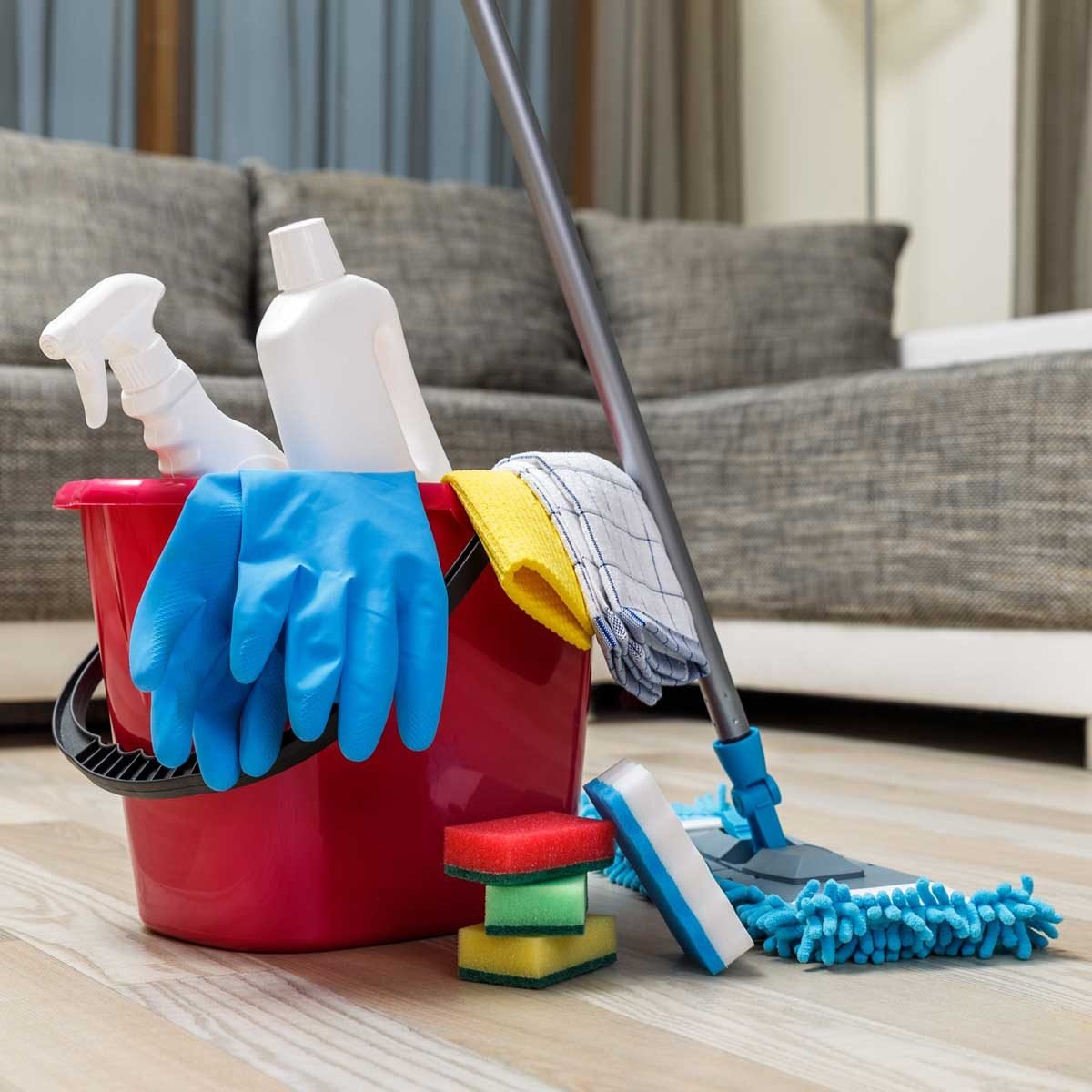Your easy-to-clean vinyl flooring needs a deep cleaning once in a while. Follow these steps to deep-clean vinyl floors and make them look like new.

How to Deep-Clean Vinyl and Linoleum Floors

Vinyl tile and sheet flooring are popular options for homes because of their price, durability and ease of care. For routine cleaning, vinyl floors can be swabbed with plain water and a damp mop, or with a product made for vinyl and other hard surfaces. You can also clean vinyl floors with a mix of one gallon water and one cup apple cider or white vinegar.
But for deep-cleaning vinyl floors, you’ll need more tools and more steps. How often you deep-clean depends on how much foot (and paw) traffic comes through your house, bringing dirt and grime with it. Some professionals recommend a monthly deep-clean. At minimum, do it two or three times per year to prolong the life of your vinyl.
On This Page
Gather Your Tools
To deep-clean your vinyl floors, James Conner, vice president of operations at Molly Maid, recommends you assemble the following tools and supplies:
- Broom or vacuum;
- Microfiber cloths;
- Baking soda;
- Putty knife;
- Rags;
- Vinyl floor cleaner, apple cider vinegar or white vinegar;
- Dish soap;
- Bucket;
- Microfiber mop.
To his list, we’ve added a scrub brush or an old toothbrush.
Prep Your Floors
- Vacuum or sweep. Start by vacuuming or broom-sweeping your floors to pick up surface dust. If you vacuum, make sure you choose a setting or attachment made for hard surfaces. (Dyson’s V11 Torque Drive is a great choice for hard floors.)
- Buff out scuff marks. Check for scuff marks and remove these before you mop. It’s easy. Conner says just slightly dampen a microfiber cloth with water, then buff away the scuff.
- Pre-clean hard-to-reach spots. With a damp toothbrush or scrub brush, scrub away dirt built up along baseboards, in corners and in other hard-to-reach areas. If the dirt is really resistant, try tackling it with a paste of baking soda and water and use your damp brush. You might need a putty knife to scrape up some really built-up gunk, especially in the kitchen.
Damp Mop
With the vinegar and water mix explained above or the store-bought vinyl floor cleaner of your choice (diluted per the manufacturer’s instructions), mop the floor with a microfiber mop. If you use the vinegar solution, Conner says you can add two or three drops of dish soap to the bucket for a little suds. Learn how to clean luxury vinyl plank flooring.
Rinse the mop in your cleaning bucket often, wringing it out so that it is damp but not dripping wet. Replace dirty wash water as needed with a new mix of your preferred cleaning solution.
Once you’ve finished mopping, dump your wash water, rinse and wring out the mop, then rinse-mop the floor with clean water. If you used a vinegar and water solution you can probably skip this step.
Dry the Floor
Standing water is the enemy of vinyl tile and sheet flooring. Water can penetrate between the seams in the vinyl, creating gaps and warping and eventually causing the adhesive to lose its grip. That’s why it’s important to use a microfiber mop instead of a string mop — it’s a lot easier to wring water out of the former.
When you’re finished, dry the floor thoroughly with clean microfiber towels. If you don’t feel like crawling around on your hands and knees, try pushing the towels around on the end of a sponge mop.
Notes on Linoleum
Though vinyl tile and LVT (luxury vinyl tile) have largely replaced linoleum in the flooring market, linoleum is still a durable, long-lasting flooring option. Conner says it requires a little more elbow grease to deep-clean. Follow the same floor prepping steps, then proceed as follows:
- Sprinkle baking soda all over the floor.
- Add a few drops of dish soap to the vinegar and water solution.
- Mop the floor with a microfiber mop, using the baking soda as a gentle scouring agent.
- Rinse the floor with clean water until there are no traces of baking soda or soap.
- Dry the floor as per the instructions above.



















